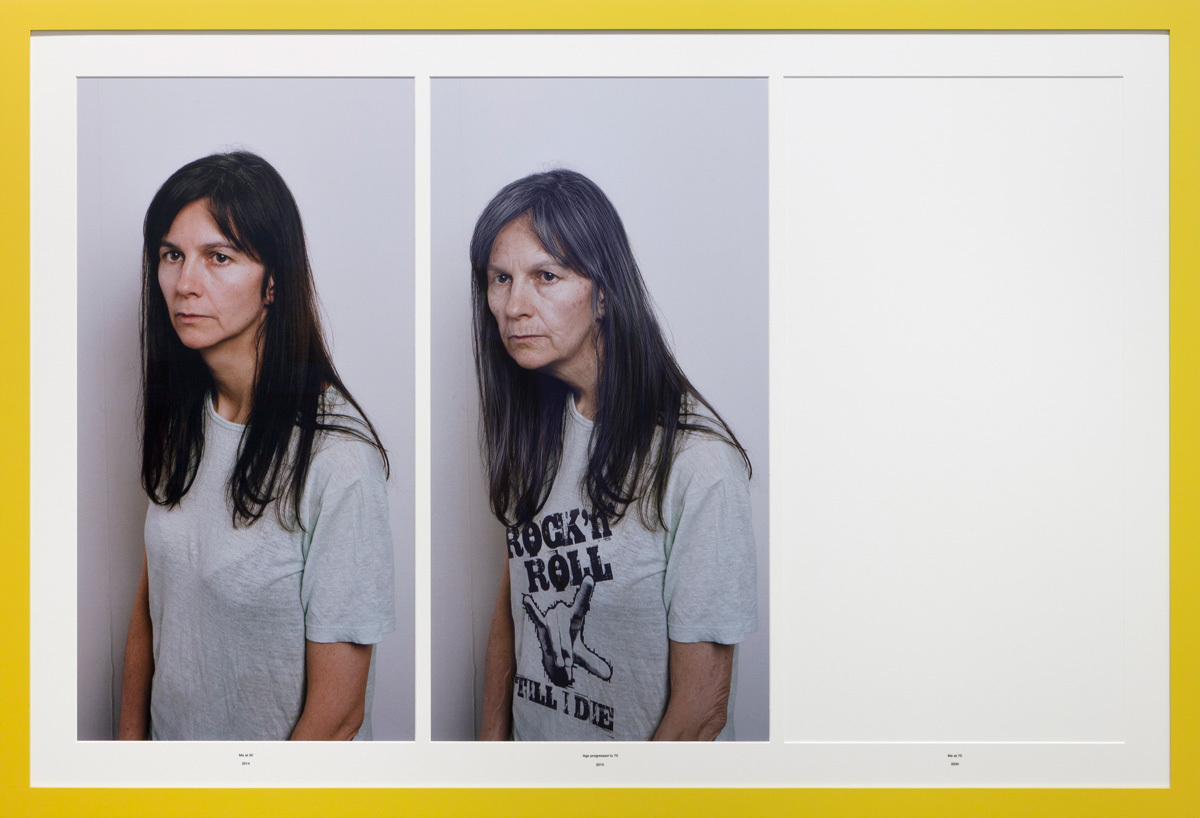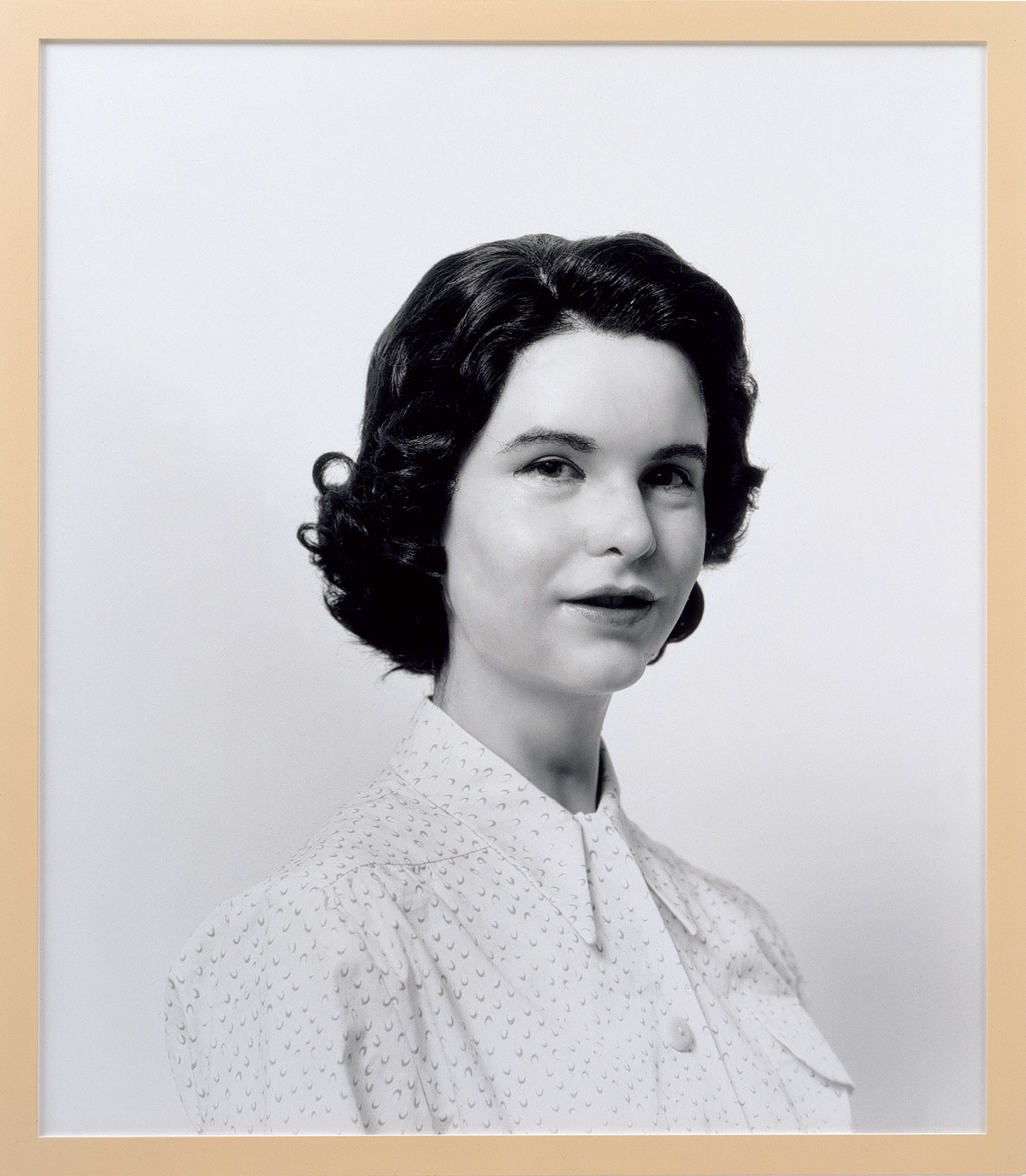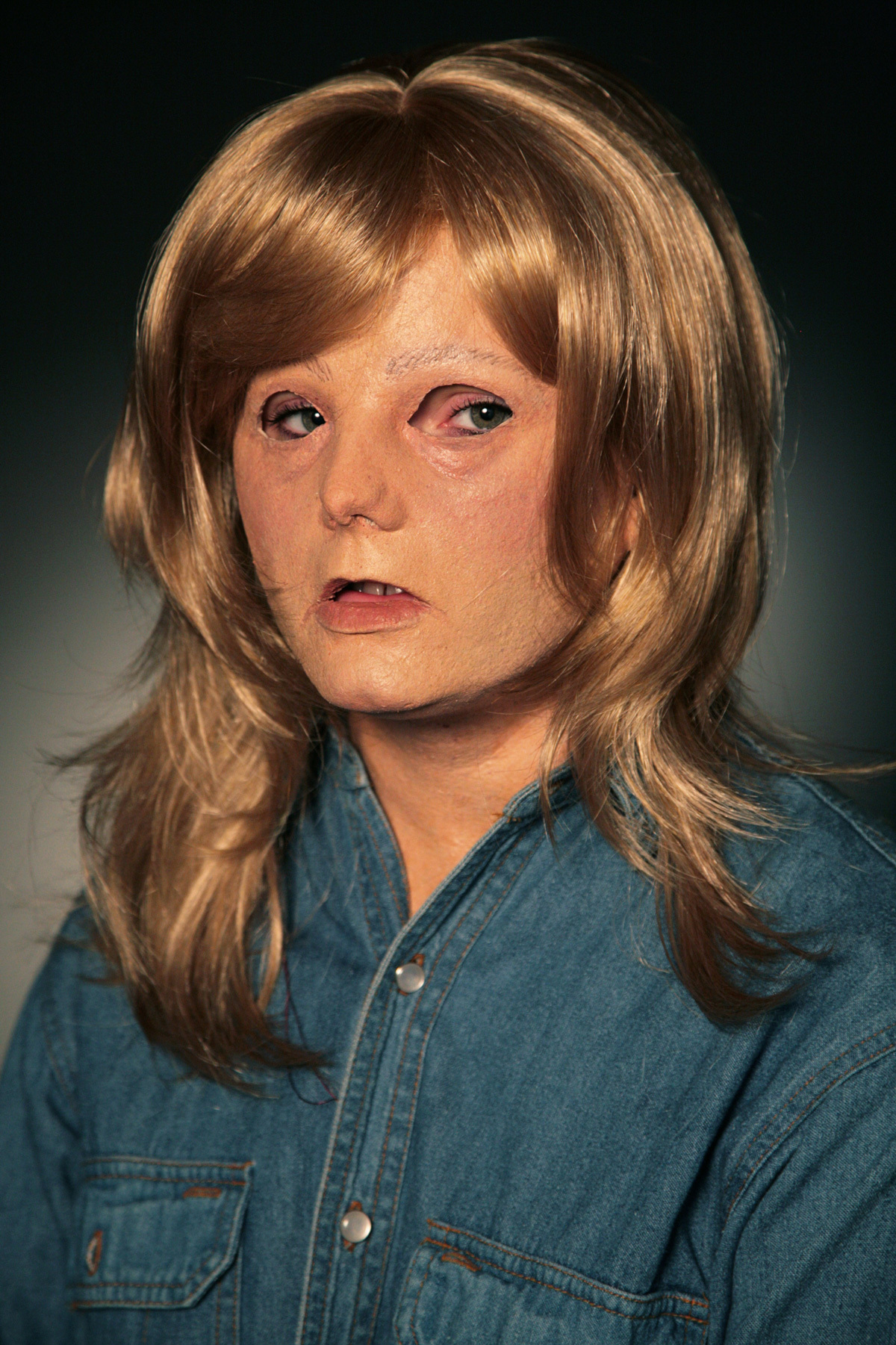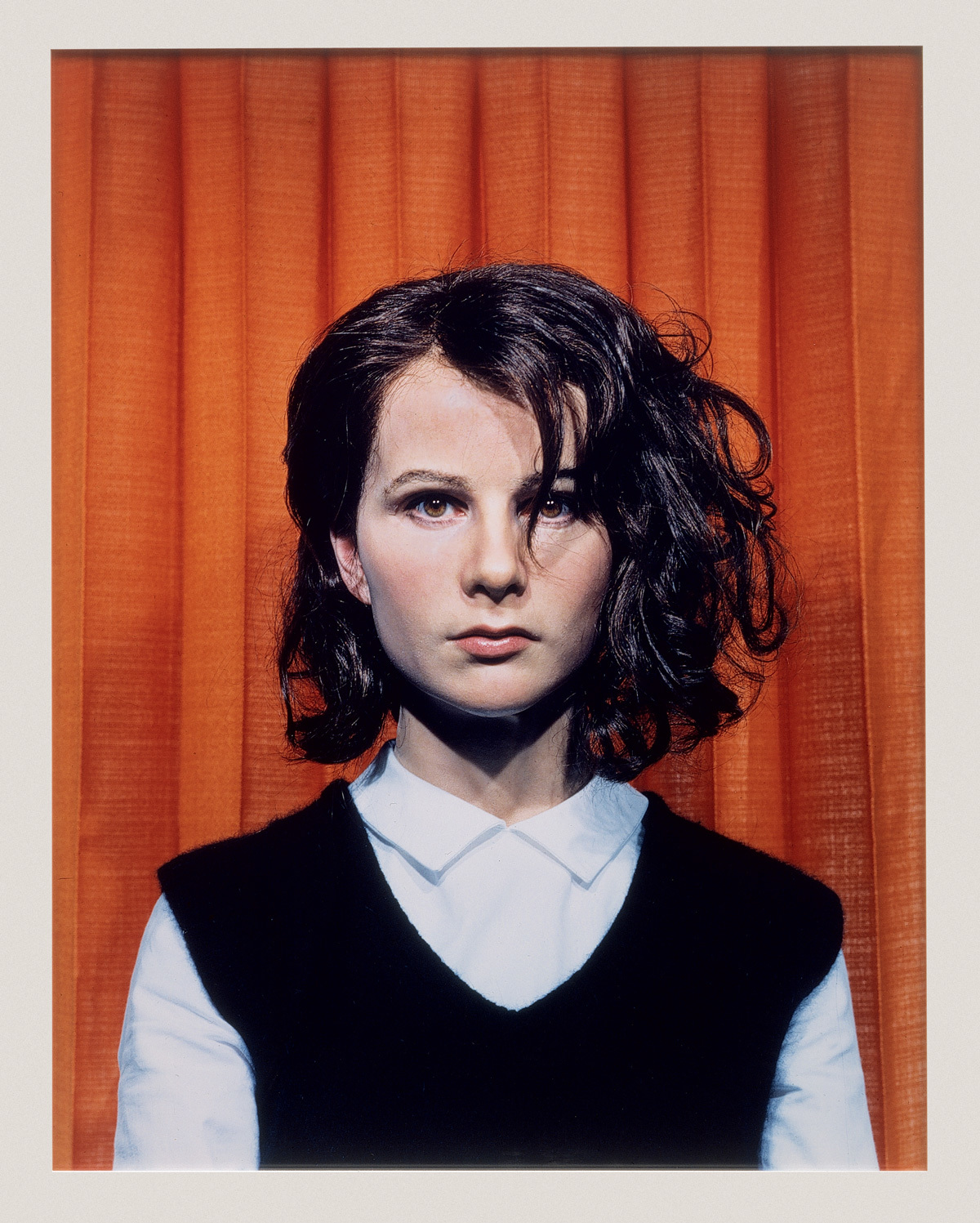Turner-Prize-winning British artist Gillian Wearing is perhaps best known for two distinct and distinctly-related modes of practice: first, for her tendency to adopt personas in her photographs; second, for her detailed excavation of those we adopt for ourselves. It’s fitting that she concludes this interview — conducted to mark the opening of her first major Spanish retrospective at IVAM, Valencia — by discussing what might be her most famous image: I’m Desperate, from the series Signs That Say What You Want Them to Say and Not Signs That Say What Someone Else Wants You to Say, in which a businessman holds the titular message scrawled onto a sheet of paper (I’M DESPERATE, all caps and no punctuation, as if he’s screaming it).
Almost all of our public channels are filled, now, with signs that say supposedly what we want them to say; run that phrase through, say, Twitter, and thousands of pleas appear. I’m desperate for coffee, I’m desperate and terrified, I’m so desperate to call myself a marathon runner, I’m desperate for something to do on Hallowe’en, please? Michael, says one, I’m desperate for you. Let’s be desperate together. Read collectively, they become messages in bottles, sent out more for the sake of exorcism than for the passing of information.
Wearing says that she has thought of the desperate businessman often. I have, too. In the age of social media, even her earliest work appears more prescient than ever: has any goofy dance-craze Vine ever bettered the pure, unselfconscious glee of the artist’s lonely, shameless dance in Peckham shopping centre? Her grimly-disguised confessors are, after all, the original and anonymous “Me”s that “It Happened” to (IHTM: I Confessed All On Video). Familial love, adultery, bullying, crime, deception, dancing like nobody’s watching, mothers, brothers and Claude Cahun — Wearing, as early as the 90s, had begun to understand and analyse the schizophrenic, confessional, visual-pack-rat culture that we would eventually come to occupy here, on the web. An image of the artist dressed as Diane Arbus (To Diane Love Gillian) might, for the net age, just as easily be re-titled “#Mom”.

I wanted to start by discussing your self-portraits that play with the ideas of time and identity: what’s really interesting about these images (of you as other family members, for example, or as famous figures) is the fact that they’re fictions that use a documentary medium to recreate a previously-documented truth. They are, essentially, “true lies.” How did you first start working on these?
I like your summation of it: the idea of using fiction to create a documented truth. As far as the beginning of things, I found an old image of my mother in 2002; when I say found it, what I mean is that I had it in my possession for years and had seen it originally as a child — I rediscovered it. I had always seen an woman older than myself in the photograph, and in the intervening years I had paid no attention to it; so when, at 39, I looked at it again, I saw for the first time that I was now the older person, and the woman in the image was really young: she was 23 years old. I realised that I had unconsciously adapted this image by incrementally ageing my mother over time.
When I realised I had done this, the photo became significantly more important to me, and it was then that I decided — when I was nearly twice her age, being the daughter she had yet to have — to go back in time to be my mother. After that, I then remade photographs of all my immediate family, including myself at 17 years old.
So you were returning to something familiar, instead of inhabiting someone familiar.
My photograph [at 17] is from a photo booth picture, so it’s also very much about me controlling my image — I didn’t originally take the photograph for a passport, I took it to look at how I looked with my hairstyle: it was an early form of ‘selfie,’ whereas my mother had been photographed by a professional photographer.
It strikes me that women, in the artificial ways that we are supposed to enhance our self-presentation, and so on, are almost expected to be adept at turning ourselves into various characters; various versions of ourselves. Is that something you think about when you’re planning these transformations?
I do think the sense of having a malleable self does come more easily to a woman. I wouldn’t say the masks of me as my family or ‘spiritual family’ would be in the same vein, though, as those masks completely envelop me: apart from my eyes, they take all semblance of self away. In fact, it’s hard to convince people that the photograph of me as my brother is a mask! A lot of people think it’s a photoshopped image, although I’m actually wearing a silicone body suit, hands, and mask. When you wear such convincing disguises, there is inevitably a change in your personality; partially, it’s because your knowledge of the person seeps in, but it’s also just the physical difference of looking at yourself as someone entirely different. It’s a stronger reaction than when you change your dress, or your hairstyle.

You mention Photoshop: has photo-editing software changed the way that you work, or do you still do everything in-camera?
I’ve done both — more recently, I worked with video editing in my new piece Rock ‘n’ Roll 70, for which I collaborated with forensic artists in order to progress my age to 70. The whole process was done via computer editing, whereas with my Album and Spiritual Family works, it was really very important to me that I created masks and inhabited them. To me, those are more like sculptural photographs.
I think that Photoshop etc. have changed the way that we represent ourselves on a casual basis; the idea of the “true lie,” again.
Both techniques have very different virtues: with photo-editing, there are certainly limitless possibilities to what can be achieved. And I do like the feeling of hyper-reality it can create.
Was it more unnerving to see yourself in the “unknown” guise of an age that you haven’t experienced yet, versus the more “familiar” thing of re-inhabiting yourself — and your self-presentation — at 17?
Rock ‘n’ Roll 70 is, especially, about anticipating my future, and it was a really challenging project. It’s much easier to look back and to represent myself via the knowledge I have in the present, and much harder to acknowledge the changes — particularly physical changes — that will eventually happen because of old-age. We get through ageing, in many respects, by self-deception: which is not a bad thing as it helps us with self esteem, but it also means we don’t particularly think about it realistically, either.
In my installation at IVAM, there’s a framed photograph that’s hung on a wallpaper which is made up from different images of me at 70: examples include a portrait of me as if I had undergone cosmetic surgery, and other images where my taste in clothes and hairstyles are a far cry from how I see myself now. The framed photograph shows me at 50, age progressed to 70 — how I personally see myself at 70 — and a blank space where, fate willing, I’ll place an actual photograph of me at 70, in 2034. I won’t be exactly the same person at 70 as I am now, but I hope I’ve captured some semblance of who I might be — we will see!

I read very recently that the word nostalgia comes from the Greek for “painful homecoming.” Would you describe yourself as a nostalgic person?
I would say that I am a romantic person, but not a nostalgic one.
I ask because I saw your survey show at the Whitechapel Gallery in 2013, and I was incredibly struck by how emotionally-evocative the work is — this fusion of the familiar/everyday with these very heightened emotional states.
The thing is that, to me, nostalgia is only about the “good” bits of life and about reminiscing, and even though I’ve worked in ways that address the past, it’s not about my feeling a longing for it — I’d rather discover things and try and illuminate them than keep them in aspic. Some of the emotions within my work are real, yes, and are not acted or predicted; but I’m interested in the whole gamut of human experience, as it’s a part of who we are.
I was wondering whether you were interested in social media? A lot of your earlier works provided anonymous or unfamiliar members of the public with this same kind of platform for personal confession and expression, so you pre-empted it in many ways.
I think social media has been beneficial in allowing more people to voice their opinions, and to get help with certain problems. But of course, it’s also open to so much online abuse that it’s hard to know what’s genuine, what’s imaginary, or what’s been written or said for provocation. Also, when someone has a genuine problem and they are vulnerable, are they able to dismiss any negative responses, or will those responses only contribute to their issues? It will be interesting to see how the generation brought up in the internet years will adapt to what is effectively a very openly judgemental world — and how it will their change behaviour.
I actually checked earlier to see whether anyone had yet made a Twitter feed that turned the signs from Signs That Say… into tweets. Surprisingly, nothing so far.
There isn’t a Twitter feed for the Signs That Say…, no, but the idea has been adapted in so many different ways, and for so many different topics, that there must be Twitter feed out there about confessions, or lies. The signs, as an idea, is probably one of the most copied works of art — I’m sure that most people, when making a signed confession [as subjects do in the series], don’t even know the origins of the idea!
Only very recently, the widow of the man from I’m Desperate contacted me. Tragically, he had passed away last year from a traffic accident and his wife wanted a copy of the image. She told me that he only ever liked two images of himself — one that she had taken, and the one that I took. I’ve always felt connected to him, because that photograph has loomed so large in my own life; I didn’t know any of his personal details, at all, as the project was about going up to strangers, and it was important that everyone in it remained a stranger to me. I only took two photographs for I’m Desperate, so our interaction was very brief! I’m grateful that his wife contacted me, because for years, I’ve wondered who this enigmatic man was.
Gillian Wearing shows at IVAM, Valencia, until January 24th, 2016.
Credits
Text Philippa Snow
Images © Gillian Wearing, courtesy Maureen Paley, London
